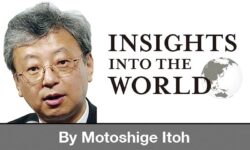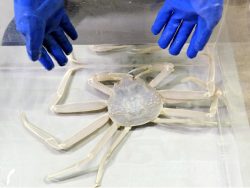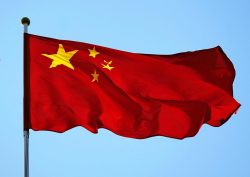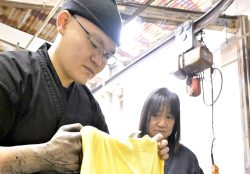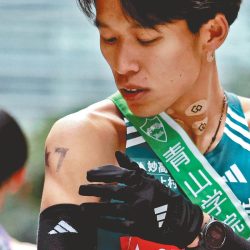11:00 JST, July 12, 2024
Prime Minister Fumio Kishida traveled to Brazil and Paraguay after his visit to France during Golden Week in May. Brazil, which is serving as this year’s chair of the Group of 20 leading economies, and Paraguay, which is the only country in South America that recognizes Taiwan, are both important diplomatic partners for Japan.
A delegation of many Japanese business leaders accompanied Kishida on his tour of the two countries, helping to further economic relations with them. I also joined the delegation as president of the Japan International Cooperation Agency (JICA). I was particularly impressed by the welcome given by representatives of the communities of Nikkei — Japanese immigrants and descendants — in both nations.
Both in Asuncion and Sao Paulo, Nikkei from small children to senior citizens greeted Kishida with applause, as if welcoming a celebrity. “It’s like coming back to my hometown,” the prime minister told them with delight.
Princess Kako, the second daughter of Crown Prince Akishino, was warmly welcomed by Nikkei when she visited Peru in November 2023. When I once visited a Nikkei community in the Amazon, I saw photos of the then Princess Mako, the eldest daughter of the current crown prince, on display. I keenly feel how important it is for Nikkei communities in various locations to stay connected to Japan.
I wonder to what extent the presence of Nikkei, who are active all over the world, is understood in Japan itself. Of course, there are areas in Japan where many Nikkei live, interacting daily with local residents. And Okinawa Prefecture is known to be more aware of Japanese emigrants than the rest of Japan. Okinawa hosts a World Uchinanchu (native to Okinawa) Festival every five years, inviting people with Okinawan roots living in other parts of the world.
Visitors to Hawaii cannot but help notice the presence of many Nikkei in that U.S. state. However, most Japanese people’s understanding of Nikkei does not seem to go far beyond a general impression that there are quite a few in the United States and Latin America.
5 million Nikkei
As of Oct. 1, 2023, there were an estimated 5 million Nikkei around the world, according to the Foreign Ministry. About 3 million of that number lived in South America. By country, Brazil was home to the most, at about 2.7 million Nikkei, followed by 1.5 million in the United States, 200,000 in Peru, 120,000 in Canada and 100,000 in Australia. The Nikkei population in Paraguay, where Kishida visited in May, stood at about 10,000.
The Foreign Ministry’s estimation of the Nikkei population does not include the 270,000 who reside in Japan. This means Japan currently is home to the third largest number of Nikkei in the world.
Needless to say, each Nikkei person has a personal history that can never be completely told and that has led them to where they are today. When we think about bilateral relations with foreign countries that have accepted immigrants from Japan, we should not forget the role Nikkei have played in fostering those relationships.
The first destination for immigrants from Japan was the United States, especially Hawaii. From the time the first group of Japanese immigrants arrived in 1868 as agricultural workers, until the U.S. Congress passed the Immigration Act of 1924 to ban immigration from Japan, about 200,000 Japanese immigrants went to Hawaii.
Japanese immigrants in the United States have suffered, facing racial discrimination and internment during World War II. Nevertheless, Nikkei have been remarkably active in U.S. society. The gateway to Honolulu is the Daniel K. Inouye International Airport named after the late U.S. senator from Hawaii. The U.S. Nikkei community also includes globally acclaimed scholar Francis Fukuyama, a Chicago native who is a regular contributor to the Insights into the World column.
Before and after World War II, Brazil welcomed large numbers of immigrants from Japan. From the time the first group of Japanese immigrants arrived aboard the Kasato Maru at the southeast Brazilian port of Santos in 1908 up until the war, a total of about 190,000 Japanese emigrated to Brazil. About 70,000 did so in the postwar years.
Japanese immigrants successfully settled in Brazil, but they became widely seen as a “yellow peril” and the Nikkei community was faced with growing discrimination. Immediately after World War II, fierce conflicts erupted within Brazil’s Nikkei population, which was divided into two groups. One side maintained that Japan had won the war — it was called the “Kachi-gumi” (victory group), while the other side, called the “Make-gumi” (defeat group), acknowledged that Japan had lost. Nonetheless, Nikkei circles have produced leaders in postwar Brazil’s political, bureaucratic, business and academic sectors.
Heads of state
A number of Nikkei have become heads of state, including Peru’s former President Alberto Fujimori. Nikkei were also the first presidents of the Republic of Palau (Haruo Remeliik), the Federated States of Micronesia (Tosiwo Nakayama) and the Republic of Marshall Islands (Amata Kabua). The island nations were part of what Japan called Nanyo Gunto (South Sea Islands); Japan took control of them after World War I. These territories became fierce battlegrounds between Japan and the United States during World War II and then came under U.N. trusteeship before emerging as sovereign states. The Nikkei population in the island nations is far smaller than in the United States and Brazil, but people of Japanese descent account for 10% to 20% of the people there. Nikkei there also have their own history of hardship.
In postwar Japan, many Japanese left for the Americas under the government’s emigration policy. This is particularly true of people seeking government agency support, with most of them choosing Latin American countries as their destinations.
However, the relevant organizations tended to provide emigrants with information about recipient countries based on insufficient preliminary research into living environments and criteria for immigration. As a result, many Japanese immigrants encountered appalling conditions they had never imagined prior to their relocation.
Japanese immigrants to the Dominican Republic, in particular, had to undergo years of immense hardship, as they received no farmland despite the pre-departure promise that land for cultivation would be transferred to them. Some later sued the Japanese government, resulting in then Prime Minister Junichiro Koizumi offering apologies in 2006. Today, Nikkei people in the Dominican Republic are highly regarded for their contribution to the development of the country.
As for postwar Japanese immigrants to Bolivia and Paraguay, there are scores of memoirs detailing years of indescribable hardship they had to endure. Today, Nikkei communities play a central role in large-scale farming in both countries.
In Japan, the number of Nikkei workers began to rise after the revised Immigration Control and Refugee Recognition Law took effect in 1990. While Nikkei abroad are now essential in supporting various countries in the world, the Nikkei population in Japan has emerged as part of Japanese society, promising to be an indispensable part of an inclusive society in the future.
JICA has implemented its own support program for Nikkei communities in Latin America with volunteers engaging in a variety of activities, including providing opportunities to learn the Japanese language and supporting elderly care facilities.
Naturally, participants in the support program develop an interest in Nikkei communities. Whenever I visit Latin America, I talk with JICA volunteers. They often say that they finally realize how little they knew about the history of Nikkei communities.
The history of Nikkei people is a story about the confluence of Japanese history and world history. I don’t think there is a more suitable theme to be included in Japanese high schools’ modern and contemporary history textbooks.
I really want the history of Nikkei to be taught at as many schools as possible. I hope the inclusion of this theme in textbooks will be treated as an important subject for consideration when the education ministry next revises the school Curriculum Guidelines.
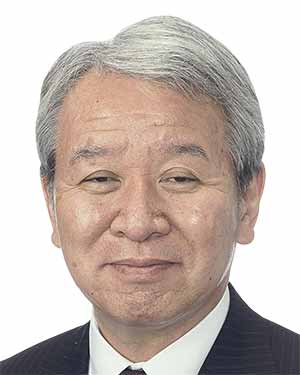
Akihiko Tanaka
Tanaka is president of the Japan International Cooperation Agency (JICA), a post he took up in April 2022 for the second time after his first stint in 2012-15. He served as president of the Tokyo-based National Graduate Institute for Policy Studies (GRIPS) from 2017 to March 2022. Previously, he was vice president of the University of Tokyo from 2009 to 2012.
The original article in Japanese appeared in the July 7 issue of The Yomiuri Shimbun.
"Editorial & Columns" POPULAR ARTICLE
-

Artificial Intelligence Expands Possibilities for Foreign Language Learners
-

Build Intellectual, Physical Strength, As Well As Communicative Power / Japan Should Move from Beneficiary to Shaper of World Order
-

Global Economy in Turmoil: Prevent Free Trade System from Going Adrift / Risks to Financial Markets Must Be Heeded
-

Japan-China Strain Set to Persist as Beijing Officials Self-Interestedly Bash Tokyo; Takaichi Unlikely to Back Down
-

French and German Ambassadors to Japan Call for Democracies to Unite in Defense against Russian Disinformation
JN ACCESS RANKING
-

As Chinese Tourists Shun Japan, Hotels and Stores Suffer
-

Osaka-Kansai Expo’s Economic Impact Estimated at ¥3.6 Trillion, Takes Actual Visitor Numbers into Account
-

Japan Govt Adopts Measures to Curb Mega Solar Power Plant Projects Amid Environmental Concerns
-

BOJ Gov. Ueda: Highly Likely Mechanism for Rising Wages, Prices Will Be Maintained
-

Economic Security Panels Debate Supply Chains, Rare Earths; Participants Emphasize Importance of Cooperation Among Allies



